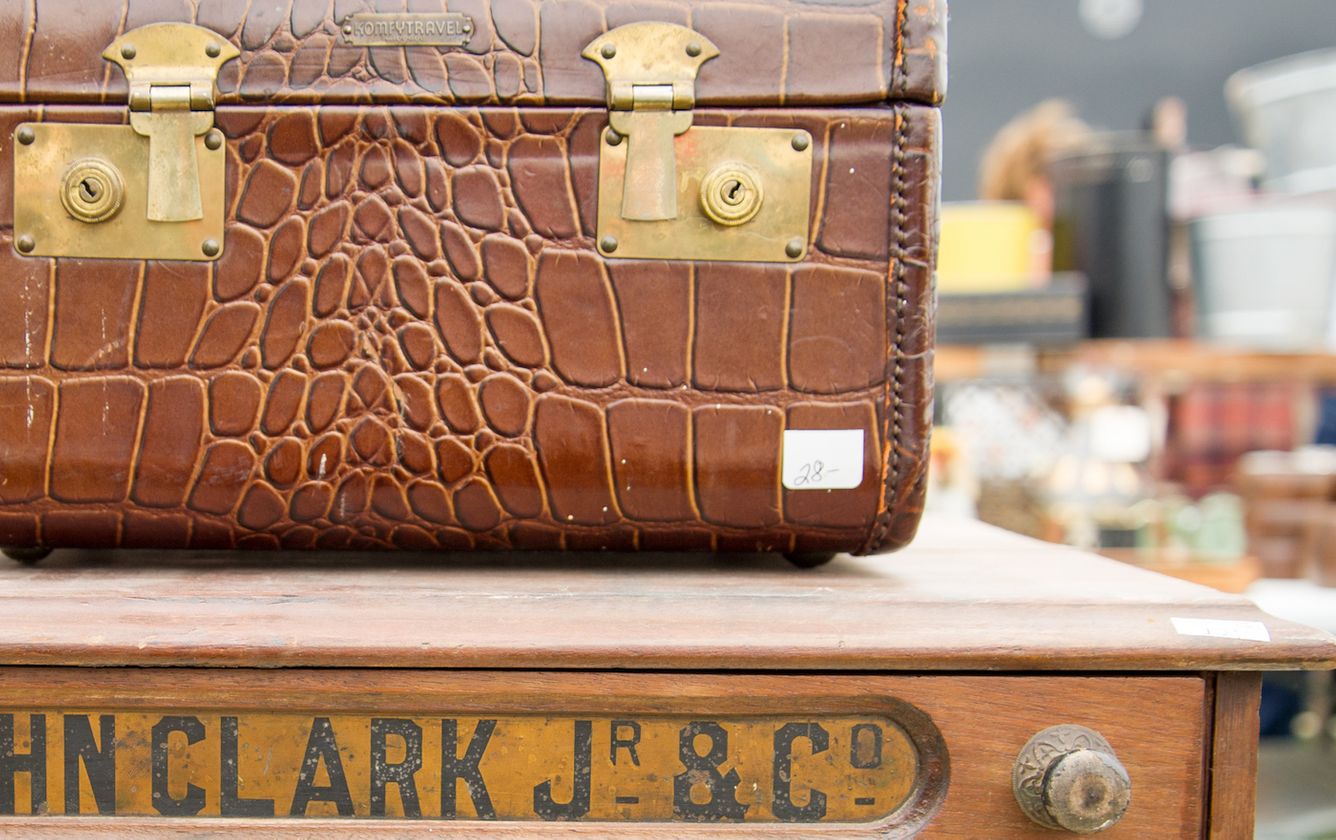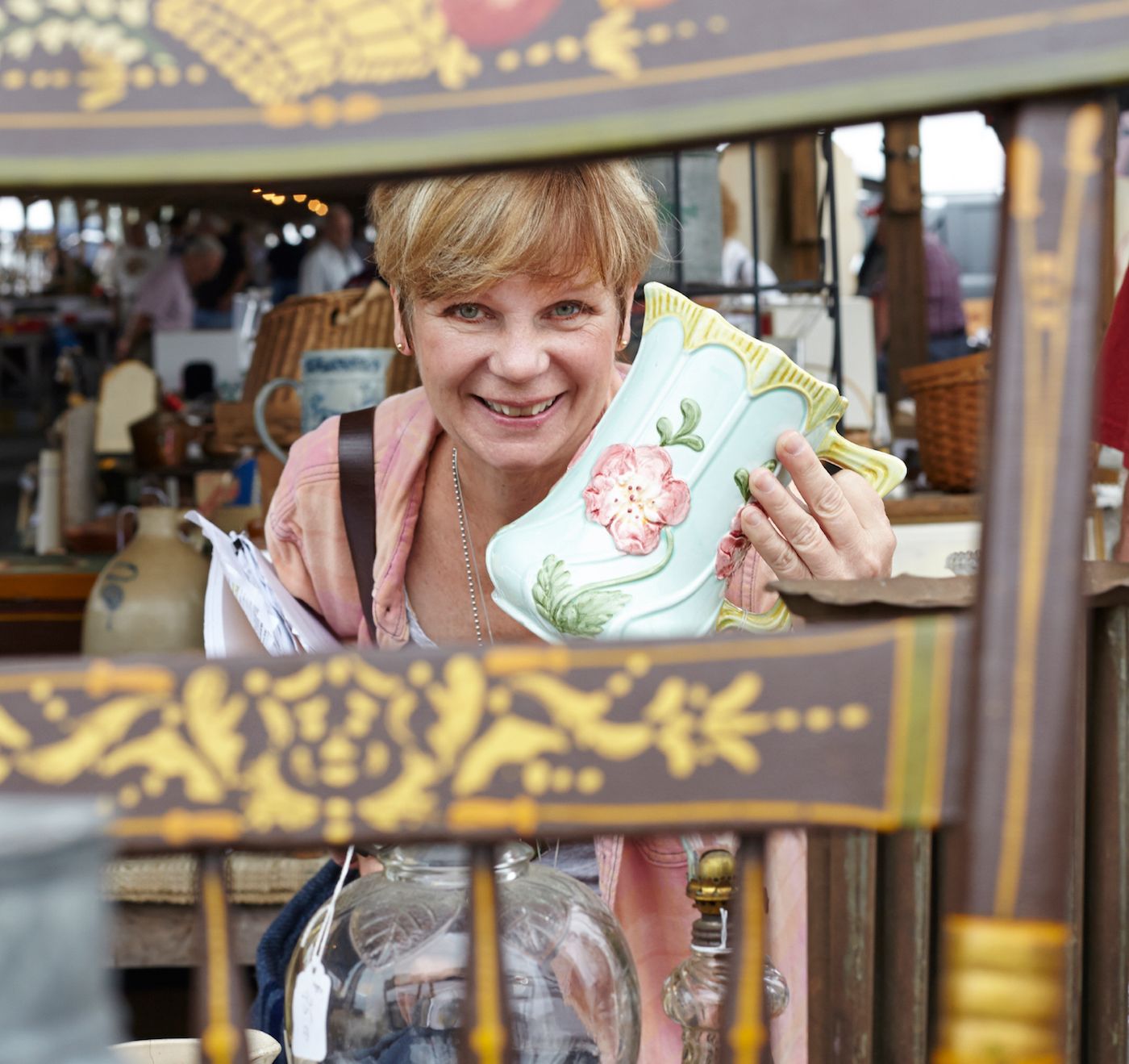
10 Commandments of Vintage Shopping
Our own Ki Nassauer shares her best strategies for avoiding those rookie mistakes.
I graduated from the school of hard knocks with a major in junking. After more than 25 years shopping antiques malls and flea markets—and everything in between, from roadside barns to off-the-radar shacks—I’ve learned a thing or two about smart buying. While I can’t guarantee that sharing my experience will mean you’ll never make any missteps, If you’re a vintage newbie, here’s my advice on how to avoid common pitfalls when you’re out on the hunt.
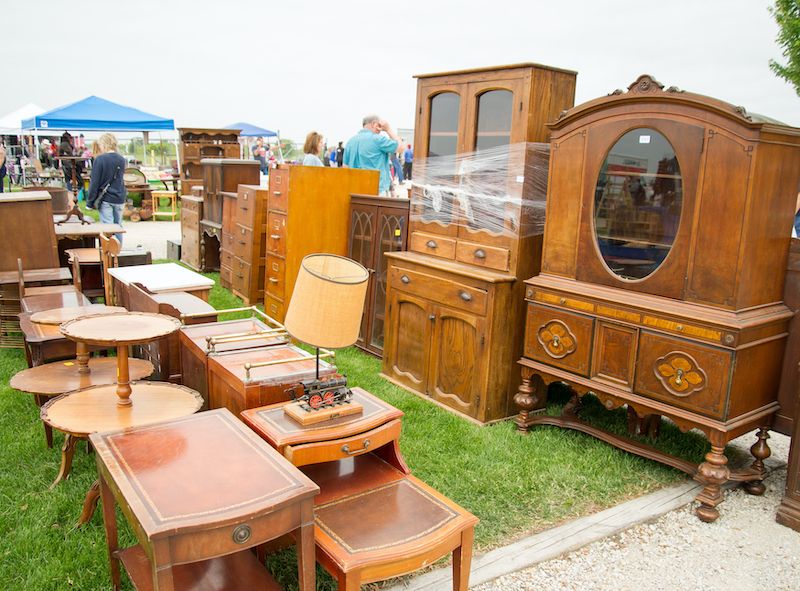
1. TAKE A QUICK LAP BEFORE BUYING. You stroll through the entrance gate and you see a lovely breadboard leaning up against a table in the first booth on the left. It is a bit pricey, but you are concerned you will commit rookie mistake number 1 and miss out. You immediately buy it and are satisfied with your purchase…until you encounter stacks of similar breadboards in multiple booths—and at better prices. Ugh! Over time, you will learn which items are more common and which are truly unique. Rule of thumb: If it is popular in the decorating world and you see multiples of an item in a booth, other dealers will have jumped on the same bandwagon.
2. …BUT BEWARE OF TAKING TOO LONG TO DECIDE. Procrastinating on an item you can’t live without (and haven’t seen anywhere else) usually means you will live without it. One-of-a-kind pieces are typically snapped up during the opening bell at a flea or show. Do a thorough but quick once-over of your potential purchase, be decisive and make a deal. I am still kicking myself for not buying a collection of MCM German wall coat racks painted in primary colors from a dealer in Michigan. They were SOLD the minute I walked away to think about it.
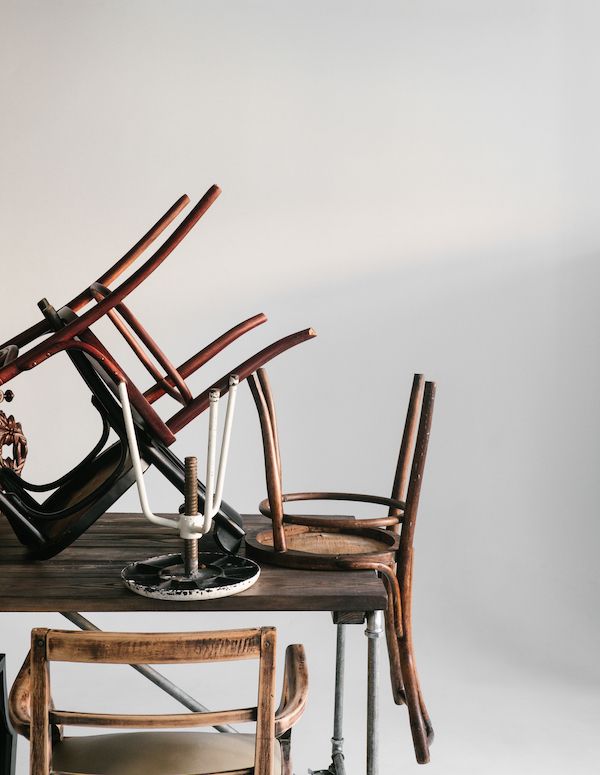
3. TAKE TIME TO INSPECT. Cracks, chips, stains, odors, peeling paint, wood rot and poorly restored pieces are abundant. Be aware of what you are buying. Perfection isn’t the goal; you just have to be okay with the imperfections. If an item appears to be freshly painted, I use the fingernail scratch test in a not-so-obvious spot to see if the paint peels off easily, which is usually due to improper prepping. I also make a habit checking backs of cabinets and inside drawers to avoid those with flimsy newly applied plywood that’s hidden away.
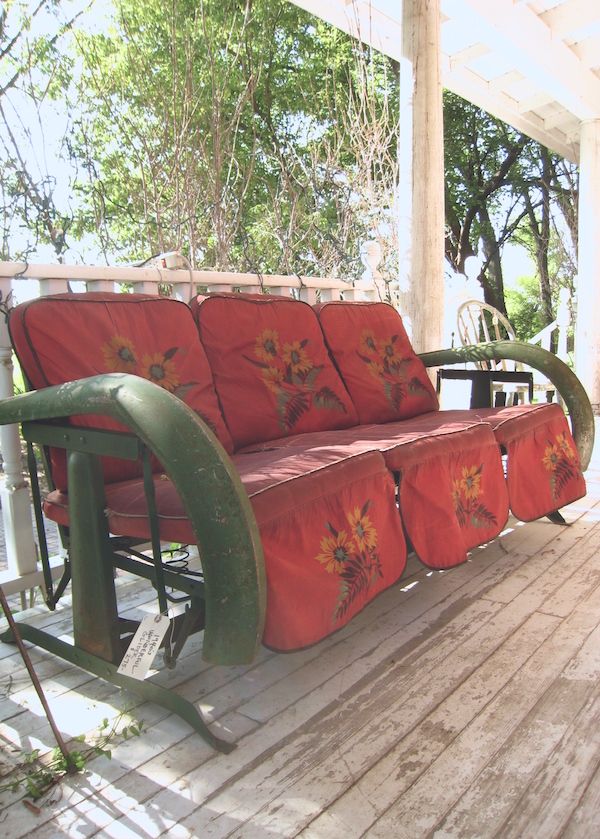
4. KNOW THY DIMENSIONS. Sometimes my eyes are bigger than my vehicle, and there is nothing more discouraging than realizing after a day of shopping that your purchases won’t fit in your car, truck or trailer no matter how many times you re-Tetris your load. Know the inside measurements of your vehicle before you buy that large piece of furniture that is just an inch bigger than the space. If you think you might be buying larger pieces, bring a battery-powered screw driver to remove headers, legs or other parts to make the squeeze. If you are out of options, ask dealers if they will deliver for a fee, rent a local mini storage for multiple trips and come back another day with a rental truck, or call a friend or family member back home to save the day. I have used all these methods. BTW: The dimensions thing doesn’t end at the car: It’s worth it to take the time to measure your front doorway, hall width and any other key spots where furniture might have to travel through or live.
5. BRING A TAPE MEASURE. Just like knowing whether an item will fit in your trunk before you buy it, you should have a list of standard heights for tables, chairs and widths for bed frames and whatever else you might be in the market for. Pull up a chair to be sure that the table you are contemplating purchasing is the right height to sit at comfortably—tables with deep aprons need to be taller that standard heights for just that reason. Scores of kitchen tables have been cut down to work as coffee tables…but many are too low once you put them by your sofa. Primitive dining chairs are often lower than today’s standards. And not all bed frames fit standard mattresses. Do not assume; measure. Helpful hint: For a quick measure of smaller goods, a dollar bill is 6 inches!
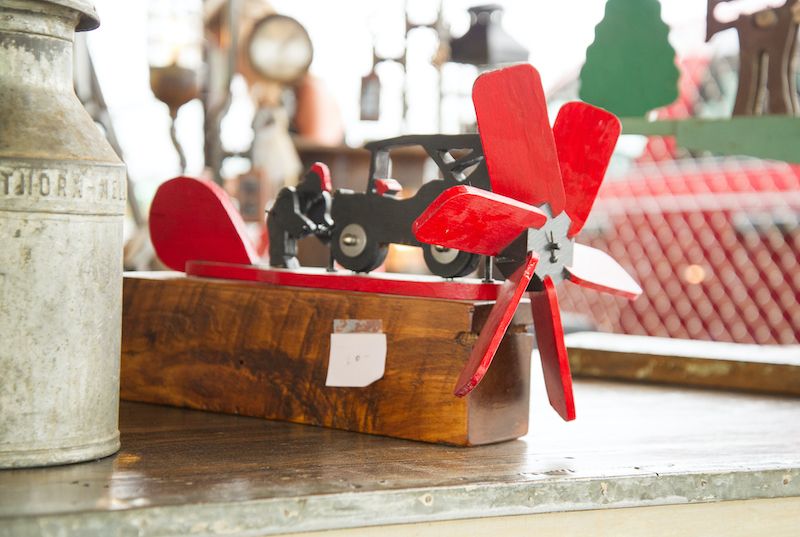
6. LEARN TO SPOT REPRODUCTIONS. Ask the dealer about an item’s background. If a seller has stacks and rows of a similar item, it typically (though not always) means it is not truly old; more likely it’s just newly made from old materials. Check the nails, hardware and patina for signs of age. Look for distressing on the finish in repeat patterns, note if an item is clean and rust-free, see if you spy shipping boxes inside the dealer’s trailer or under tables, or a newer price sticker or barcode on the bottom of the item. If you don’t mind that you might be buying a new item simply made to look old, go for it, but if you want the real deal, be patient and keep on shopping.
7. DO A CRITTER CHECK. Termites, silverfish, furniture beetles, moths, fleas and other creepy crawlers can make their home in many items you will find at the flea, particularly in upholstered pieces. To avoid unwanted guests, check for telltale signs (holes in fabric or wood, pepper flake-looking bits that could be droppings, dead bugs or bug parts, etc.) prior to purchasing.
8. TRY NOT TO GET CAUGHT UP IN THE MOMENT. Remember when you traveled to the Bahamas and you purchased multiple tropical-print shirts with all the other tourists? It felt right when you were there, but you haven’t worn them since. Be careful not to get caught up in the frenzy when you see other shoppers clamoring for this, that or the other. You know you, your style, your needs and your budget.
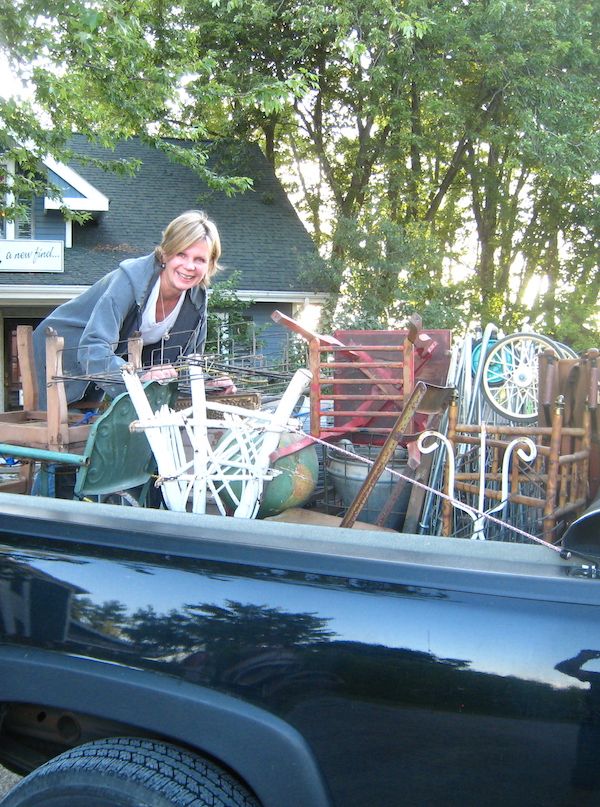
9. PACK LIKE YOU MEAN IT. At the end of the day, you are sore from hauling, and likely physically and emotionally exhausted. But now is not the time to let your guard down. Examine your load to be sure you have carefully packed all the breakables and secured all the items that could be a flight risk in an open trailer. I recall driving down the freeway ignoring honking horns from passing cars trying to warn me that drawers had jiggled loose from a desk I was hauling. I arrived home with a desk—but no drawers.
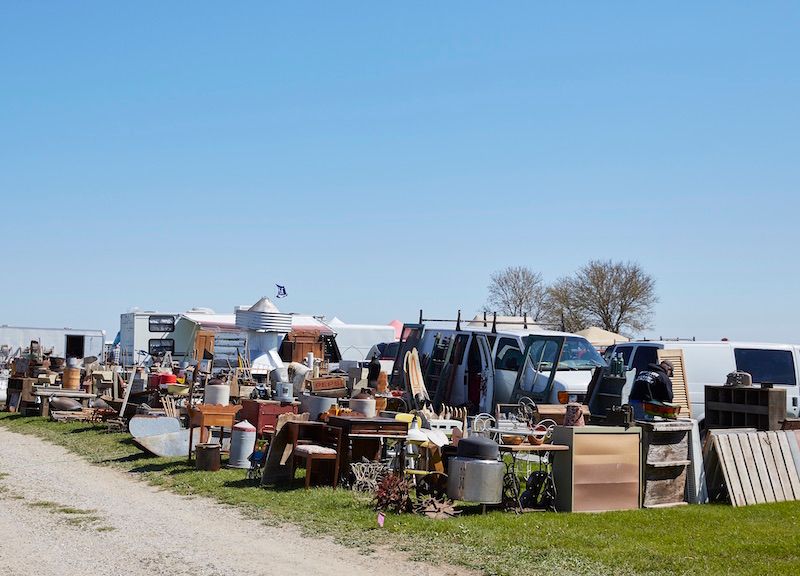
10. GET REAL. We will all face this kind of moment in our shopping excursions: You see the perfect chippy-paint table, and it’s a great price but needs some work. Ask yourself: How much work does it need, and when will you realistically have time to get to it? And do you have the skills it would require to fix it if there’s, say, a broken leg? I’ve found myself filling shelves, closets and garage stalls with project pieces that I don’t truly have the time to tackle. My new motto: If I won’t have time to get to it in the next two months, I pass on it.
COVER PHOTO Laura Moss
WORDS Ki Nassauer
HOME PAGE

